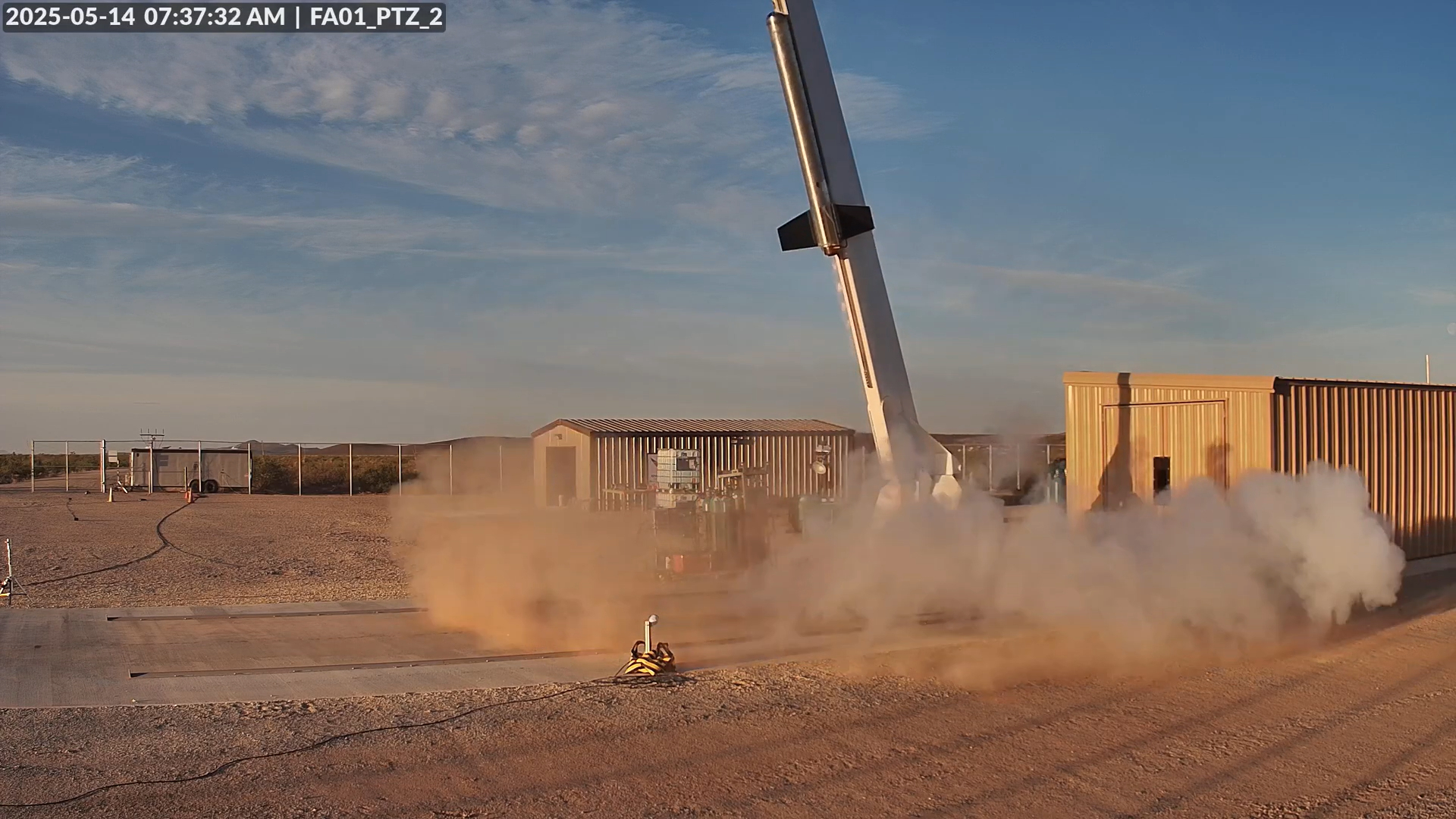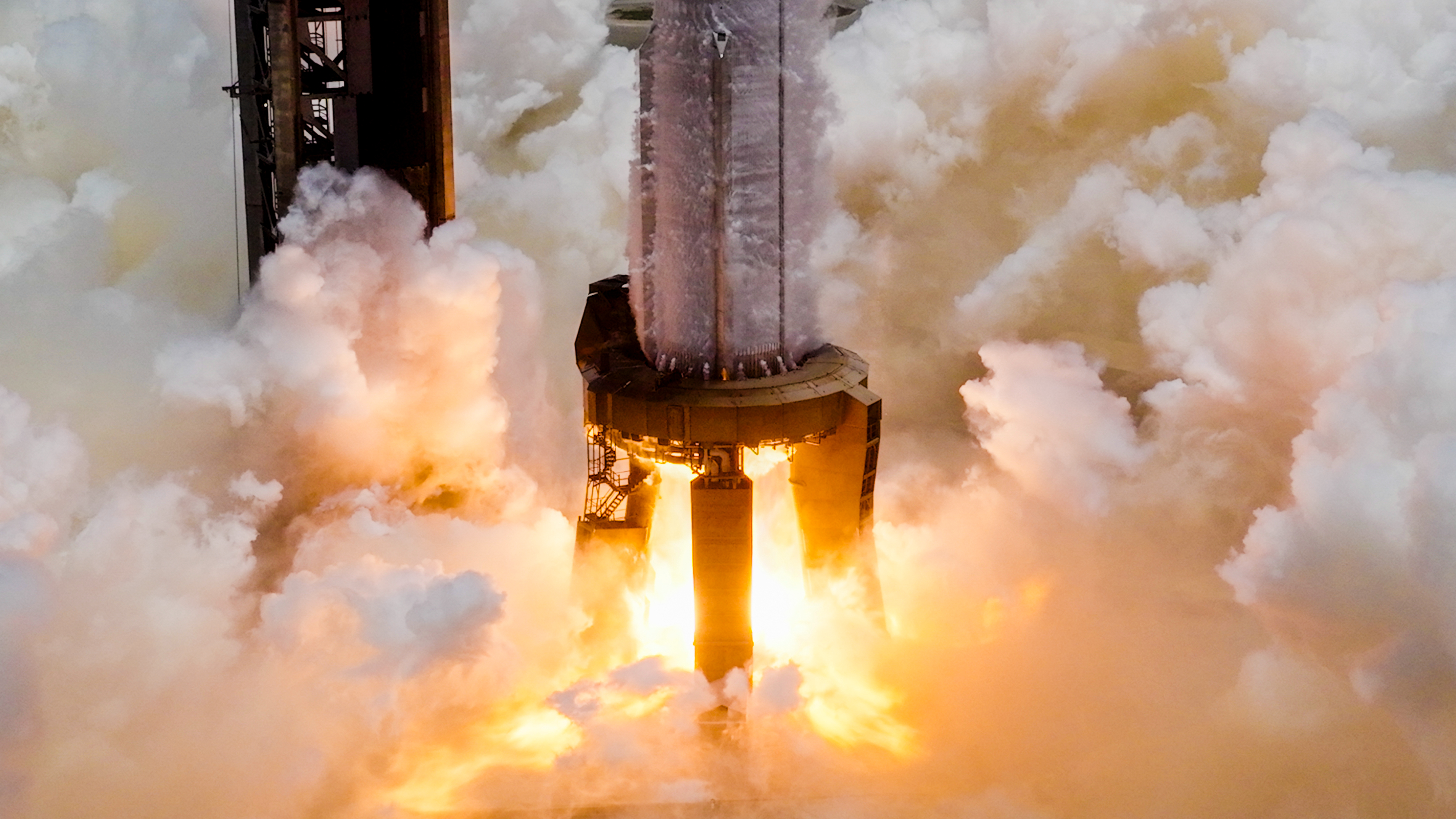Venus Aerospace debuts potentially revolutionary rocket engine with landmark 1st flight (video)
The technology could lead to vehicles traveling at hypersonic speeds straight off a runway.
Houston-based startup Venus Aerospace has completed the first-ever test flight of a rotating detonation rocket engine (RDRE) in the United States.
The launch took place on Wednesday (May 14) from Spaceport America in New Mexico. A small rocket equipped with Venus' RDRE lifted off at 9:37 a.m. EDT (1337 GMT; 7:37 a.m. local time in New Mexico).
The milestone marked the first successful test of such an engine from U.S. soil and took Venus a "step closer to making high-speed flight accessible, affordable and sustainable," the company said in a statement.

"This is the moment we've been working toward for five years," Venus CEO Sassie Duggleby said in the statement.
The test serves as a proof of design for Venus's RDRE and keeps the company on track for runway-based high-speed flight, she added: "We've proven that this technology works — not just in simulations or the lab, but in the air."
The Venus RDRE uses a compact, high-efficiency design the company hopes can eventually power aircraft up to Mach 6 — six times the speed of sound — starting from conventional runways. Compared to traditional rocket engines, RDREs offer greater thrust in smaller packages, but up until now the technology has been mostly theoretical.
Normally, rocket engines burn fuel in a combustion chamber in a steady, controlled process. RDREs use a continuous detonation wave that travels in a circle within a ring-shaped chamber, which produces higher pressure and efficiency and results in increased thrust with less fuel.
Get the Space.com Newsletter
Breaking space news, the latest updates on rocket launches, skywatching events and more!
"This milestone proves our engine works outside the lab, under real flight conditions," Venus CTO Andrew Duggleby said in the same statement. "We've built an engine that not only runs, but runs reliably and efficiently — and that's what makes it scalable."
The RDRE is designed to work in tandem with Venus's VDR2 air-breathing detonation ramjet — a combination the company says will enable sustained hypersonic flight without the need for a booster. (Hypersonic flight is generally defined as Mach 5 and above.)
"This is the foundation we need that, combined with a ramjet, completes the system from takeoff to sustained hypersonic flight," Andrew Duggleby said.
With the successful test in the books, Venus is planning full-scale propulsion test of their integrated system as it moves to qualify the design of its future Stargazer M4, a reusable passenger aircraft capable of reaching Mach 4.
Join our Space Forums to keep talking space on the latest missions, night sky and more! And if you have a news tip, correction or comment, let us know at: community@space.com.

Josh Dinner is the Staff Writer for Spaceflight at Space.com. He is a writer and photographer with a passion for science and space exploration, and has been working the space beat since 2016. Josh has covered the evolution of NASA's commercial spaceflight partnerships and crewed missions from the Space Coast, as well as NASA science missions and more. He also enjoys building 1:144-scale model rockets and human-flown spacecraft. Find some of Josh's launch photography on Instagram and his website, and follow him on X, where he mostly posts in haiku.
You must confirm your public display name before commenting
Please logout and then login again, you will then be prompted to enter your display name.
